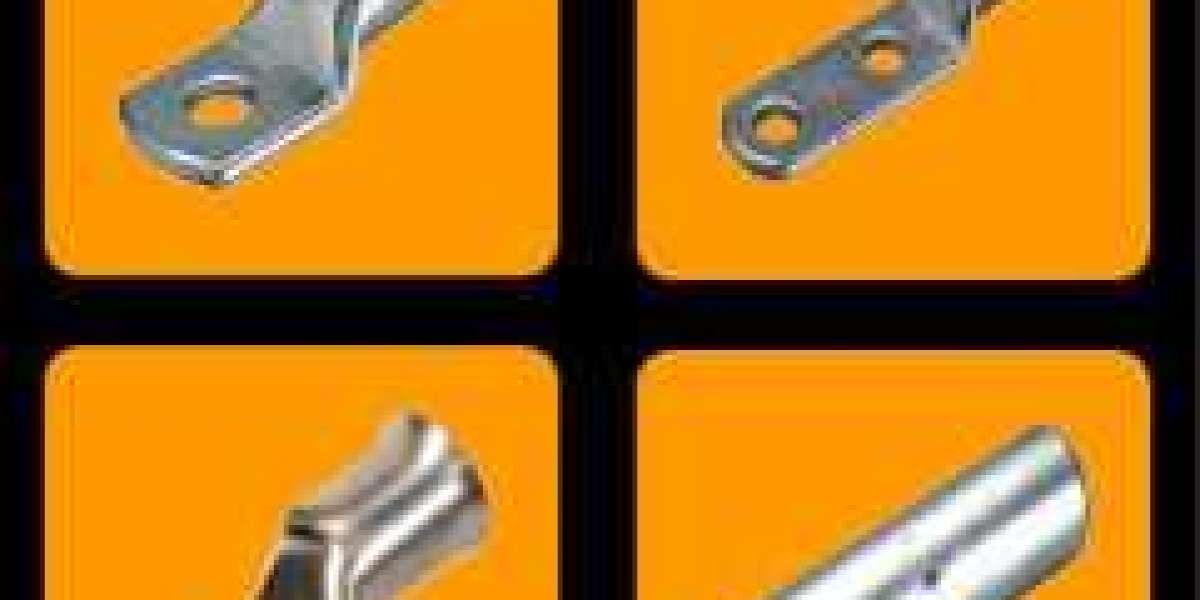Copper cable lugs are critical connectors in electrical installations, providing a secure path for current flow and ensuring safe, stable connections. However, improper handling or installation can lead to issues like overheating, voltage drops, and even equipment failure. To maximize efficiency and safety, it’s essential to be aware of common mistakes people make with copper cable lugs and how to avoid them.
1. Selecting the Wrong Lug Type
One of the most frequent mistakes is choosing the wrong type of lug for the application. Copper cable lugs come in various designs, including standard, pin, and ring types, each suited to specific applications. For example, pin-type lugs are ideal for panel connections, while ring-type lugs are preferred in environments where vibration is an issue.
Solution: Determine the connection type and installation environment, and select the lug that best matches your requirements. Carefully review specifications and consult manufacturer guidelines to make an informed choice.
2. Using Incorrect Lug Size
Choosing the wrong lug size can lead to inadequate connections, increasing the risk of overheating or energy loss. If the lug is too small, it will not secure the cable properly, leading to loose connections. Conversely, an oversized lug may not create the desired electrical contact, resulting in inefficient current flow.
Solution: Measure the cable size accurately and ensure the lug you select corresponds to the wire gauge. Most copper cable lug manufacturers provide sizing charts; using these can help match cables to the correct lugs.
3. Failing to Strip the Cable Properly
Properly stripping the insulation from cables before inserting them into the lug is crucial. If too much insulation is left on, the cable won’t fit into the lug completely, which can result in poor conductivity and overheating. Conversely, stripping too much exposes the copper to oxidation and environmental damage.
Solution: Use an appropriate wire stripper, and carefully follow the lug’s specifications for the amount of insulation to remove. Stripping just the right amount ensures optimal contact and helps maintain the integrity of the connection.
4. Incorrect Crimping Techniques
Crimping is one of the most critical steps when working with copper cable lugs. Improper crimping can lead to a loose connection, increasing resistance and causing the connection to overheat. Additionally, crimping without the correct tool can damage the lug, making it ineffective.
Solution: Use a crimping tool designed specifically for copper lugs, as these tools provide the appropriate pressure and form needed for a reliable connection. Follow the manufacturer’s instructions for crimping procedures to achieve a secure, lasting connection.
5. Ignoring Manufacturer Guidelines
Each copper cable lug manufacturer provides guidelines regarding installation, use, and maintenance. Ignoring these recommendations often leads to suboptimal performance and reduces the longevity of the connection.
Solution: Take time to review and understand the manufacturer’s specifications for each copper cable lug. Following these guidelines ensures the lugs perform to their maximum capacity, resulting in a safer and more durable connection.
6. Skipping Protective Measures
Copper cable lugs can corrode over time, especially in environments with high humidity or corrosive substances. Failing to take preventive measures can lead to corrosion, weakening the electrical connection.
Solution: Use protective coatings or heat shrink tubing to safeguard exposed parts of the cable and lug, reducing the risk of corrosion. These protective measures not only enhance the connection’s durability but also maintain consistent performance.
7. Not Using the Right Torque for Bolted Connections
When using copper cable lugs with bolts, improper torque can result in loose or overly tight connections. Loose connections increase resistance, while excessive torque can damage the lug or cable, compromising the integrity of the connection.
Solution: Use a torque wrench set to the manufacturer’s recommended specifications for bolted connections. This ensures the correct tension, keeping the connection secure without damaging the components.
8. Overlooking Environmental Considerations
The environment where the cable lug is installed can impact its performance and longevity. Installing standard copper lugs in a corrosive or extreme environment can lead to rapid degradation, risking connection failure.
Solution: Choose cable lugs that are rated for the environment in which they will be installed. In corrosive or high-humidity locations, consider using tinned copper lugs or additional protective coatings for enhanced durability.
9. Skipping Quality Checks and Maintenance
Quality control is essential for ensuring that copper cable lugs perform reliably over time. Skipping regular inspections and maintenance can lead to unnoticed issues, such as loosening connections or corrosion, which impact electrical safety and efficiency.
Solution: Regularly inspect connections for signs of wear, corrosion, or looseness, and promptly address any issues. Periodic checks, especially in industrial and outdoor settings, are key to maintaining a reliable electrical system.
10. Not Considering Future Expansion Needs
Installing copper cable lugs without considering future expansion can lead to costly rework or system inefficiencies. Overloading an undersized lug or cable as demands increase can reduce performance and increase the risk of failure.
Solution: Plan for future expansion during the design phase. Select lugs and cables that can handle potential increases in load, reducing the need for extensive reinstallation.
Conclusion
Working with copper cable lugs requires attention to detail and adherence to best practices to achieve safe and reliable electrical connections. Avoiding common mistakes such as improper sizing, incorrect crimping, and neglecting environmental factors can greatly enhance the performance and durability of your electrical system. By following manufacturer guidelines, using the right tools, and conducting regular inspections, you can optimize the effectiveness of copper cable lugs and ensure long-lasting electrical safety.








